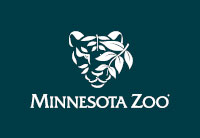The pygmy hippopotamus (Choeropsis liberiensis) is a unique and endangered species found only in the Upper Guinean Forests of West Africa. Much is still unknown about pygmy hippos, including their use of habitat and role within the ecosystem. Pygmy hippos are thought to have significant impacts on trail development and plant succession. They maintain tunnel-like trails through dense vegetation which act as travel corridors for other wildlife. As herbivorous non-ruminating fermenters, they act as nutrient and seed dispersers by spreading their feces on land and in water. The pygmy hippo is threatened by loss of habitat and hunting. Estimated population numbers are 2,000-3,000 individuals within 4 different countries: Republic of Guinea, Cote D’lvoire, Liberia and Sierra Leone. These numbers are decreasing and this species is considered “endangered”.
This study by graduate student April Conway takes place on Tiwai Island, on the Moa River in southeastern Sierra Leone. During the project’s first field season (2008-2009), researchers began development of innovative techniques for studying pygmy hippos in the field and conducted preliminary conservation education in the local villages. They used camera traps and succeeded in capturing over 100 photographs of pygmy hippos in addition to many other species, and aim to continue and expand these activities. Funds from Minnesota Zoo’s Ulysses S. Seal Conservation Grant Program were provided to conduct two additional months of camera trapping of previously unsampled areas, to determine local conservation perceptions through village interviews, and to conduct environmental education activities in local schools. This project was championed by Kelly Lessard, Public Relations Manager at the Minnesota Zoo.



Get Social